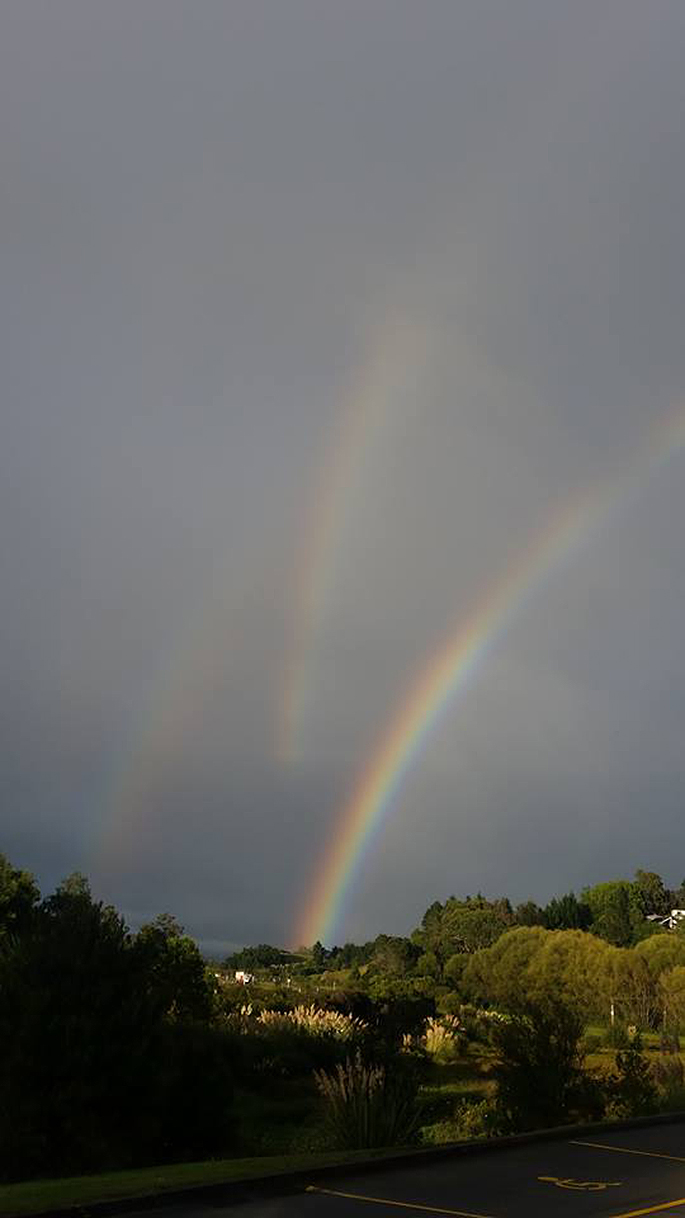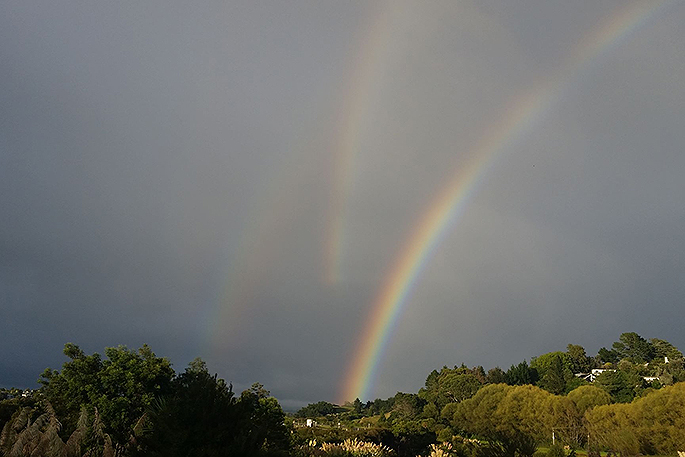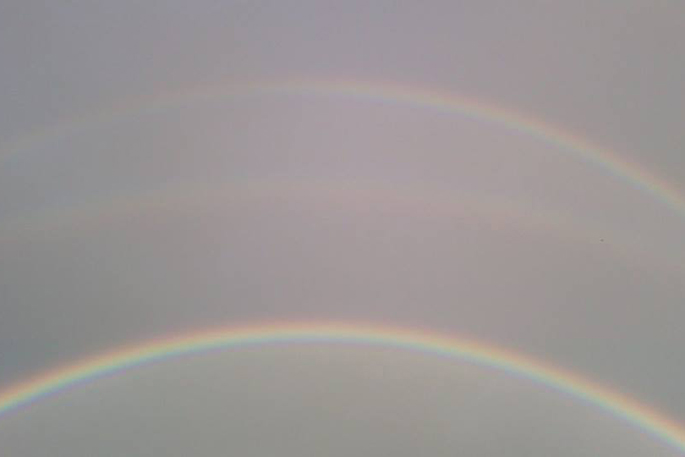A rare phenomenon has been captured on camera by SunLive readers.
Photos were sent in to the newsroom and via our Facebook page this morning of an unusual triple rainbow.
Rainbows are common after a storm, and even double rainbows are known to appear from time to time.
However, this morning Tauranga's skies were graced with a triple rainbow – something experts say is ‘incredibly rare'.
MetService meteorologist Peter Little says he's seen the occasional double rainbow, but the recent weather we've been having seems to have brought out the rarer kinds.
 Possibly the same rainbow, from another vantage point. Photo: Bonnie Hebenton.
Possibly the same rainbow, from another vantage point. Photo: Bonnie Hebenton.
'We had something similar in Wellington last week – a number of rainbows stacked on top of one another,” he says.
'They're caused by an optical effect related to the number of internal refractions in each raindrop.”
One online article confirms their rarity, with there being only five scientific reports of triple rainbows in 250 years.
According to earthsky.org, triple (and even quadruple) rainbows form around the sun, centred on it. They can be hard to see because in order to see them, one must look into the sun's glare.
 The triple rainbow captured by Peter Sanders.
The triple rainbow captured by Peter Sanders.




4 comments
How's this for an explanation
Posted on 30-03-2017 16:38 | By Owen G
I think the two parallel bows are the regular primary and secondary bows refracted directly from the sun. The other obtuse and more elevated bow is produced by the sun's reflection off the harbour or ocean and therefore less intense and it's secondary is not strong enough to be seen by you or the camera. Owen G.
Reflection rainbow,- Met Society member
Posted on 30-03-2017 18:08 | By Dale Johnston
I know what this is, I've seen one. Owen G. is right. When the sun angle is low and at right compass heading and reflects off very calm sea a new and elevated, dimmer primary bow is created, it's secondary is way too dim to be seen. Meteorologist Peter Little's comments about extra internal raindrop reflections being involved is wrong in this case. Dale Johnston.
Owen G again
Posted on 30-03-2017 20:36 | By Owen G
I think Peter Littles explanation explains the secondary bow and as you can see from the photographs the colours are reversed and refracted from a different angle because they come from the convex inner surface of each droplet. That would explain their lesser intensity.
Double and a twin
Posted on 06-04-2017 08:33 | By Darren
The primary rainbow is the brightest and has red at the top.A secondary is parallel to the primary but the colours are reversed with red at the bottom and is caused by double reflections inside the same raindrops (tertiary and quaternary are possible but very rare).A twinned rainbow has red at the top but seems to come from the same starting point and is caused by a two sizes of raindrops. I think this is a double and a twin. Given that this was seen in Greerton I don't believe it is a reflection rainbow.
Leave a Comment
You must be logged in to make a comment.